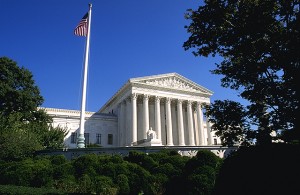 It is not often that the Supreme Court provides a clear rule on any aspect of Estate or Financial planning (or even graces our niche with a passing reference), so these occasions call for special attention!! On June 12, 2014, the Supreme Court’s unanimous decision in Clark v. Rameker clarified that an inherited IRA is not a protected retirement fund for bankruptcy purposes. Here, we analyze the decision and its impact on planning issues and review the applicable rules that apply to inherited IRAs.
It is not often that the Supreme Court provides a clear rule on any aspect of Estate or Financial planning (or even graces our niche with a passing reference), so these occasions call for special attention!! On June 12, 2014, the Supreme Court’s unanimous decision in Clark v. Rameker clarified that an inherited IRA is not a protected retirement fund for bankruptcy purposes. Here, we analyze the decision and its impact on planning issues and review the applicable rules that apply to inherited IRAs.
So here’s a common example:
Bob has been using the 401(k) offered by his employer as his primary retirement savings strategy. After 30 years of contributions, it’s grown to more than half a million dollars. Bob and his wife Lisa (who is 50 years old) are counting on this money to provide a good portion of income in their retirement. Unfortunately, Bob developed a heart condition and after six months in the hospital he dies. Lisa inherits the 401(k) and $250,000 in medical bills. In addition, she has her own debt, a mortgage and two children in college. Her job doesn’t even cover the family’s monthly expenses. Now, Lisa is no dummy, she has a good financial advisor and instead of rolling Bob’s 401(k) account into an IRA in her name, she transfers it to an “inherited” IRA, meaning Bob is still listed as the “owner” of the account and she is named the “beneficiary.” This enables her to access the money in the IRA without having to pay a 10% penalty in case she has to make a withdrawal before she is 59½. (Now, once she reaches age 59½ and the penalty no longer applies, she will no doubt retitle the account, putting it in her own name but for now this seems like the best course of action… if this sounds like Chinese to you, please see my post on IRA Distributions Made Simple (Spoiler Alert: there is nothing simple about it…)
The medical bills continue to pour in. Lisa pays what she can, but can’t afford to continue paying such ridiculous, over-inflated bills. The hospital turns the bills over to a collection agency who hires a lawyer to sue her for the debt and Lisa files for bankruptcy, believing that at least her husband’s IRA will be off-limits because it’s a retirement account and everyone knows retirement accounts are exempt assets, right!!?
Wrong.
In Clark, it was not the spouse, but the daughter that inherited the IRA – with the same repercussion.
In 2001 Ruth Heffron established a traditional IRA and named her daughter as beneficiary. Ruth passed away a year later and left approximately $400,000 to her daughter in the IRA. Inherited IRAs have special rules on distributions, and one has to take distributions over a life expectancy or withdraw the entire balance within five years. Her daughter, Mrs. Heffron-Clark, elected to use life expectancy with monthly distributions.
Fast forward to 2010 and Ms. Heffron-Clark and her husband file for Chapter 7 bankruptcy. The IRA has approximately $300,000 remaining, and you can bet that the couple considered the IRA to be an exempt asset. The unsecured creditors of the bankruptcy estate disagreed, thus beginning the litigation.
Rest assured that Ms. Heffron-Clark was arguing furiously that the funds in that inherited IRA are “retirement funds” because, at some point, they were set aside for retirement. The Supreme Court unanimously decided that an inherited IRA do not constitute “retirement funds” and are not exempt from bankruptcy claims. Ms. Heffron-Clark’s creditors could in fact reach that $300k.
So what does the decision mean for current IRA account holders?
Many of my clients’ asset portfolios include sizable IRA or other retirement accounts. But most people don’t realize that retirement assets require special handling in an estate plan in order to preserve the tax advantages associated with that money.
If you plan to name anyone other than your spouse as your IRA’s beneficiary, the decision in Clark v. Rameker means you may want to consider a more sophisticated estate planning arrangement. A sensible alternative is to name a trust established for your heir (or heirs) as the IRA’s beneficiary. The trust would then serve to shelter the IRA assets from the beneficiary’s creditors in the case of bankruptcy. Individuals who take this approach should carefully comply with the IRS’ rules to construct what is known as a “see-through” trust. Otherwise, you may trigger a requirement to pay out the IRA within five years of the original owner’s death. A Trust must also include certain language – known as conduit provisions – allowing for distributions of tax-deferred retirement money to be stretched out over the life of the oldest beneficiary in order to avoid the money being eaten away by taxes.
Regardless of whether we agree with the decision in Clark v. Rameker or not, at least we now have clearer rules upon which we can base our planning decisions.





